Discover 8 hidden attractions, cool sights, and unusual things to do in Wilton (United States). Don't miss out on these must-see attractions: Weir Farm National Historical Park, Hurlbutt Street School, and Sloan-Raymond-Fitch House. Also, be sure to include David Lambert House in your itinerary.
Below, you can find the list of the most amazing places you should visit in Wilton (Connecticut).
Table of Contents
Weir Farm National Historical Park
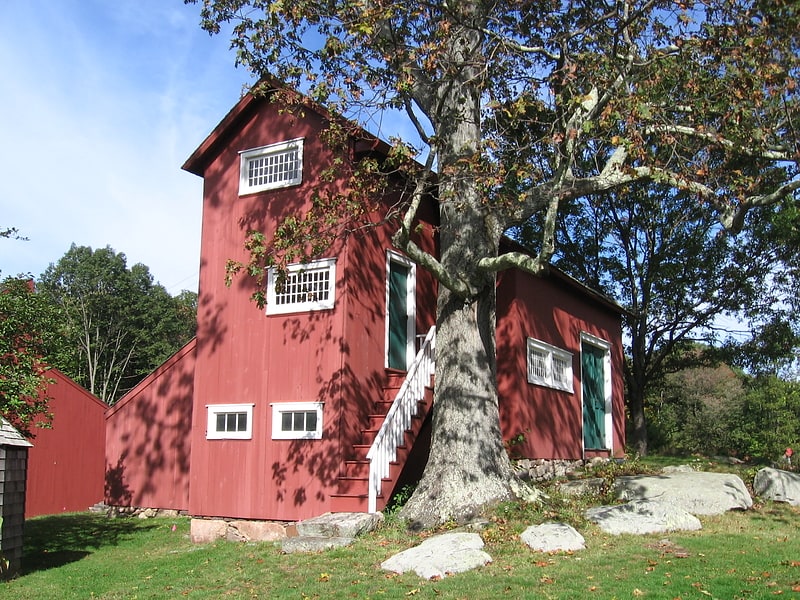
National park in Wilton, Connecticut. Weir Farm National Historical Park is located in Ridgefield and Wilton, Connecticut. It commemorates the life and work of American impressionist painter J. Alden Weir and other artists who stayed at the site or lived there, to include Childe Hassam, Albert Pinkham Ryder, John Singer Sargent, and John Twachtman.
Weir Farm is one of two sites in the National Park Service devoted to the visual arts, along with Saint-Gaudens National Historical Park.
Both sites maintain ongoing artist-in-residence programs; to date, the Weir Farm Art Center (formerly the Weir Farm Trust) has hosted more than 150 artists for month long stays at the site. Weir Farm also runs an ongoing "Take Part in Art" program, under which visitors can create their own works on site.
Weir Farm was recognized on the 52nd quarter in 2020 as part of the America the Beautiful Quarters Program.[1]
Address: 735 Nod Hill Rd, 06897-1309 Wilton
Hurlbutt Street School
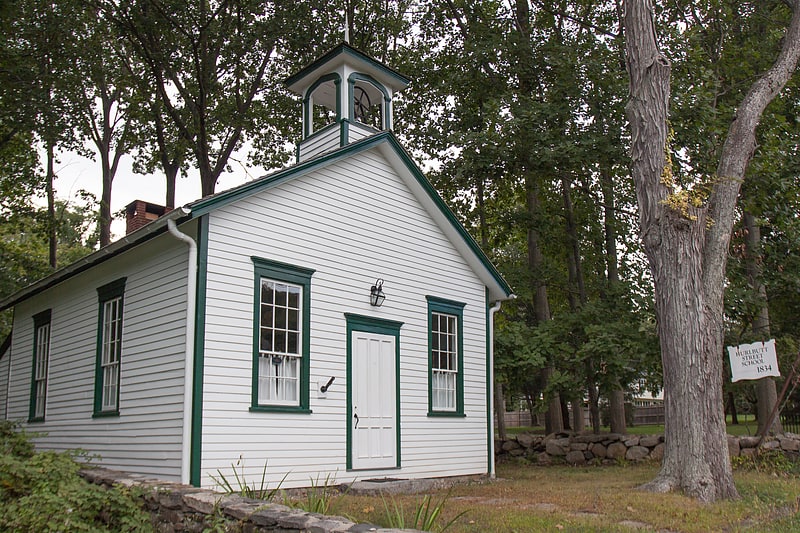
Museum in Wilton, Connecticut. The Hurlbutt Street School is a historic one-room schoolhouse at 157 Hurlbutt Street in Wilton, Connecticut. Built in 1834, it served the town as a school for nearly a century, and was then converted to a local history museum. It is the town's best-preserved 19th-century district school building, and was listed on the National Register of Historic Places in 1996.[2]
Address: 157 Hurlbutt Street, Wilton
Sloan-Raymond-Fitch House
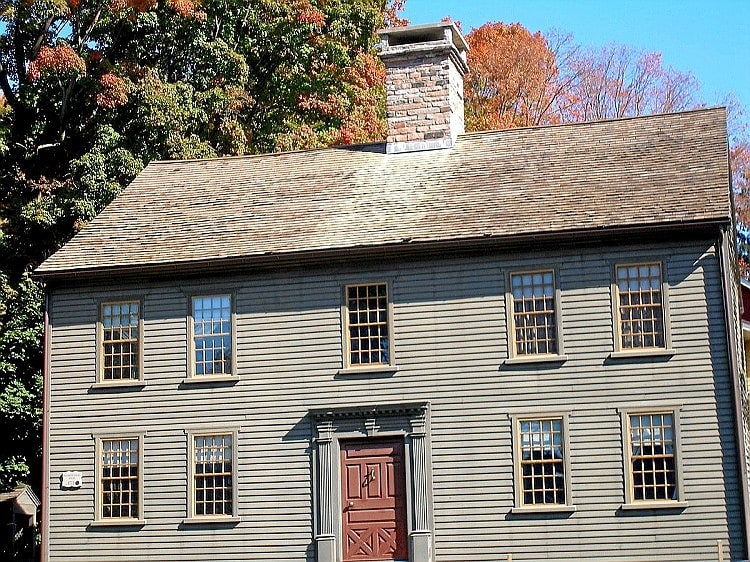
Museum in Wilton, Connecticut. The Sloan-Raymond-Fitch House is a historic house at 224 Danbury Road in Wilton, Connecticut. It is a 2+1⁄2-story wood-frame structure, five bays wide, with a side-gable roof and a large central chimney. A smaller two-story ell extends to the rear. The main block is evaluated to have been built sometime between 1760 and 1780, based on the construction methods used, while the ell is believed to be an older structure. The building has undergone some form of restorative work on several occasions, but has retained a significant amount of its original workmanship, and is a well-preserved 18th-century structure. The house has been moved from its original location. It is now on the same property as the Betts-Sturges-Blackmar House, and is part of a museum complex operated by the Wilton Historical Society.
The house was listed on the National Register of Historic Places in 1982.[3]
David Lambert House

Museum in Wilton. The David Lambert House is a historic house museum at 150 Danbury Road in Wilton, Connecticut. Built about 1726 by one of the town's early settlers, it is a well-preserved colonial-era house with later Federal and Colonial Revival alterations. It is now owned by the local historical society. It was listed on the National Register of Historic Places in 1992.[4]
Wilton Library Association
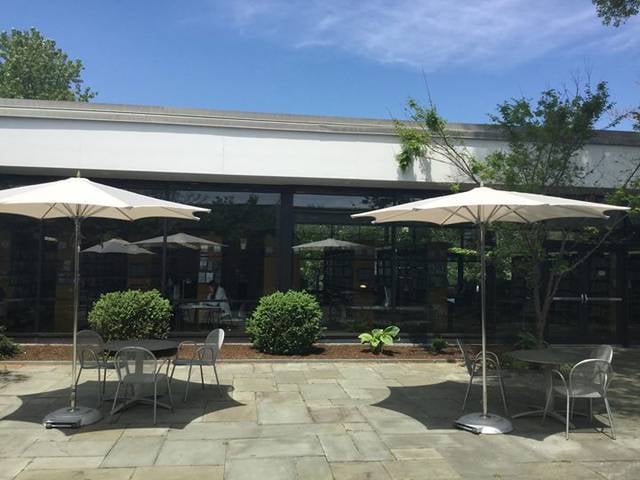
Library
Address: 137 Old Ridgefield Rd, 06897 Wilton
Marvin Tavern
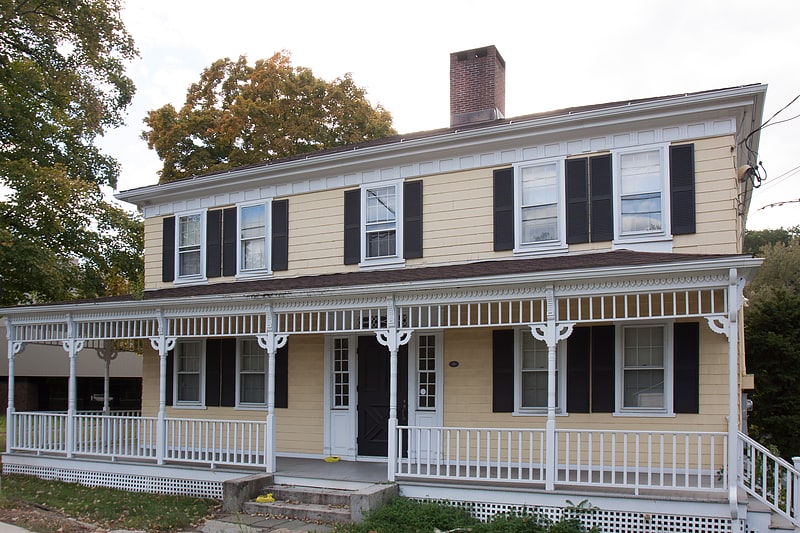
The Marvin Tavern, also known as Matthew Marvin House, is a historic house located at 405 Danbury Road in Wilton, Connecticut, Located adjacent to Wilton High School. It is a 2+1⁄2-story wood-frame structure, with a hip roof and a large central chimney. Although it was built c. 1760, its most prominent feature is its porch, added c. 1880, which features turned posts, a spindled frieze, and decorative jigsawn brackets. It is also of interest to architectural historians for a number of features, including its flared eaves, which were rare in the region before the 19th century.
The house was listed on the National Register of Historic Places in 1984.[5]
Woodcock Nature Center
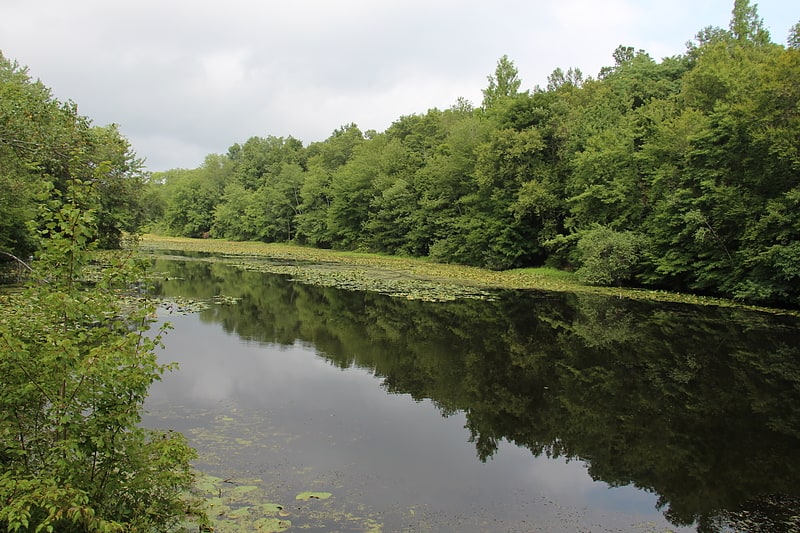
Non-profit. The Woodcock Nature Center is a non-profit nature center located at 56 Deer Run Road in Wilton, Connecticut. The center is situated on 179 acres of state-protected land with 3 miles of trails traversing a mixture of habitats, including woods with stands of maple, beech, oak and hickory trees, a pond and wetlands.
The center's building houses of local and exotic snakes, frogs and lizards, as well as a few rehabilitated birds of prey that were too injured to be released back into the wild.
The center offers summer camp, after school, and other programs for children and school groups.[6]
Cannondale Historic District
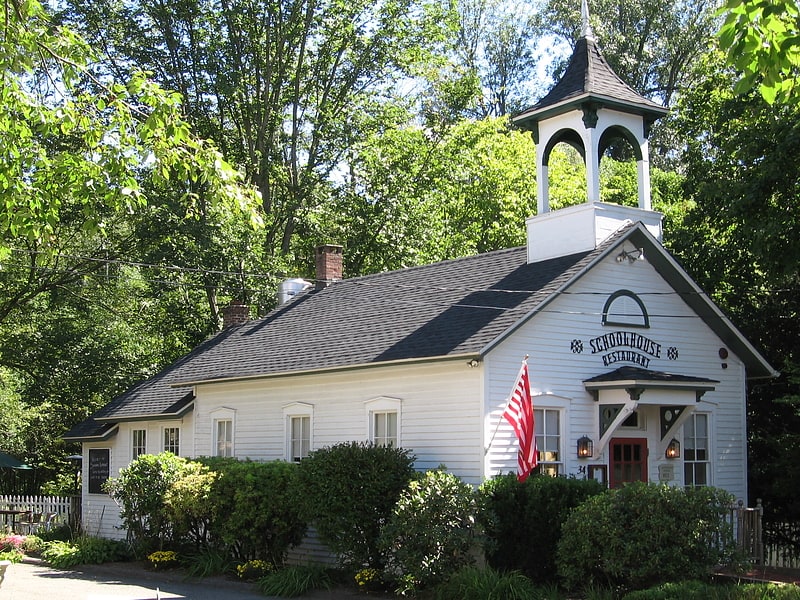
Region in Wilton, Connecticut. Cannondale Historic District is a historic district in the Cannondale section in the north-central area of the town of Wilton, Connecticut. The district includes 58 contributing buildings, one other contributing structure, one contributing site, and 3 contributing objects, over a 202 acres. About half of the buildings are along Danbury Road and most of the rest are close to the Cannondale train station.The district is significant because it embodies the distinctive architectural and cultural-landscape characteristics of a small commercial center as well as an agricultural community from the early national period through the early 20th century....The historic uses of the properties in the district include virtually the full array of human activity in this region—farming, residential, religious, educational, community groups, small-scale manufacturing, transportation, and even government. The close physical relationship among all these uses, as well as the informal character of the commercial enterprises before the rise of more aggressive techniques to attract consumers, capture some of the texture of life as lived by prior generations. The district is also significant for its collection of architecture and for its historic significance.
The district has a number of buildings in Greek Revival style, as well as Victorian era buildings and Colonial Revival buildings.[7]